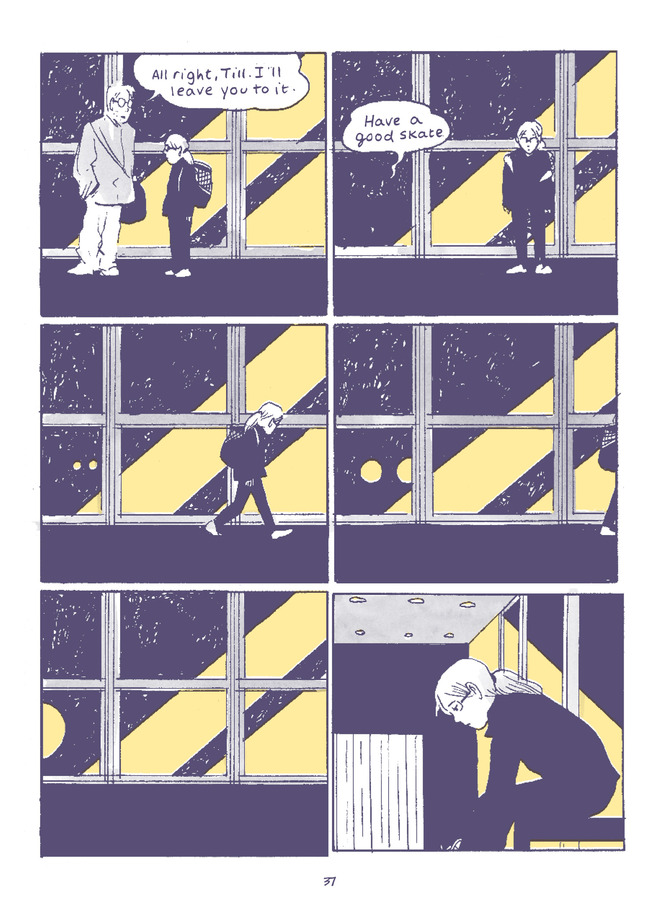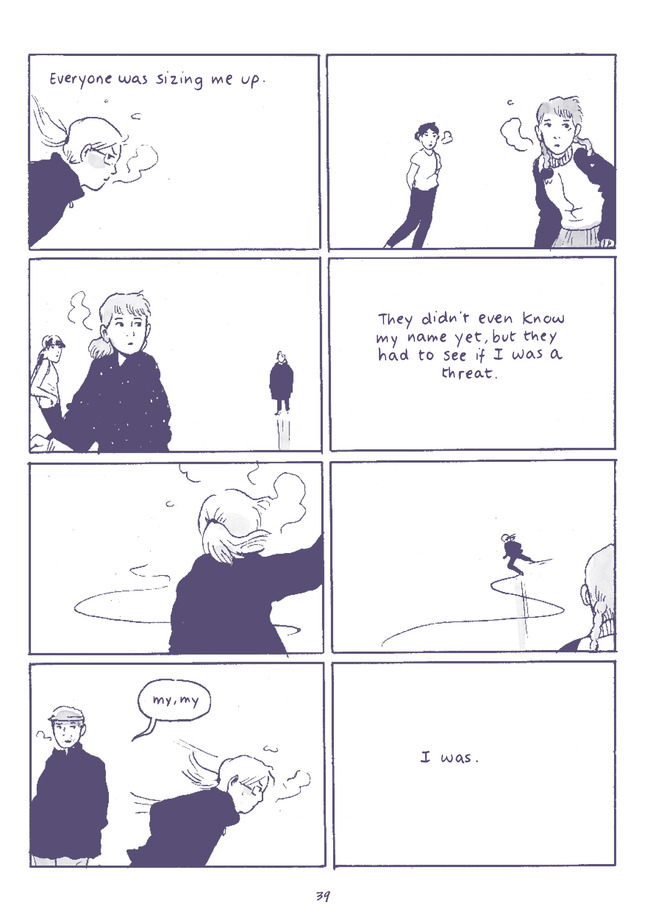Spinning’s Tillie Walden on the Power of Pursuing and Ending Childhood Dreams
Main Art by Tillie Walden
In the few years she’s been active, cartoonist Tillie Walden has published three books, been nominated for an Eisner and won two Ignatz awards. Not bad for anyone, let alone a young artist born in the mid-90s. Her work ethic and ambition are evident through previous projects I Love This Part, The End of Summer and A City Inside , and now First Second has released her biggest project yet, Spinning, a 400-page memoir that uses her years as a competitive figure skater to tell a story about learning to follow your own path. Walden answered Paste’s questions over email, including how she manages to wake up at 4 a.m. to work.
![]()
Paste: Spinning is your thesis work for the Center for Cartoon Studies (CCS), right? Can you talk a little bit about how it evolved during the long process of creating it?
Tillie Walden: Wow, it’s so funny to remember that. It feels like centuries ago that this book was just my thesis. Yes, it was the project I worked on and graduated with in my second year at CCS. It really just slowly grew throughout the year. The scope of the project kept getting wider. It started out as just a collection of small black-and-white scenes of me on the ice and looking a little grumpy. And with the help of James Sturm (my thesis advisor and friend) I turned those scenes into a skeleton of a narrative with a beginning, middle and end. After I graduated from school and made a deal with First Second Books, my editor Connie Hsu helped me turn the skeleton into the 400-page graphic novel that you can read now.
Paste: How much changed between your submitting it to CCS and publishing it through First Second?
Walden: Ah, I guess I sort of got into that in the last question. It really just got fattened up. Nothing major changed, and it was the original version that everyone at First Second fell in love with in the first place so no one was interested in a total revamp. My editor at FS really just helped me add transitions and depth and the finishing touches. She held my hand through it all, thank god! I needed it.

Spinning Interior Art by Tillie Walden
Paste: Your work is pretty focused on line (more than on shape or color). Has it always been that way?
Walden: Yes, I think that’s something I learned from manga. I read a lot of manga as a kid, and for those who don’t, the majority of it is black and white. So I spent a lot of younger years focusing on line and realizing the power in it. I think that really influenced how I think about my own art and how I approach visualizing the world.
Paste: What’s your set-up for drawing? Are you particular about materials (i.e., specific pens or pencils)?
Walden: I have a little desk from IKEA that I’ve been drawing all my comics on since the dawn of time (or at least it feels that way.) And as far as materials go, I tend to switch around a lot. I have an alarming number of pens and pencils, a lot that are the same brands, but in different colors. Bear with me. Some days I feel a powerful need to draw with a pink pencil; the next day, I need a white pencil. It’s the same with pens. I really just pick what I use that day based on my mood. It’s the same with my paper. I use different paper with every project I do in order to have a paper that I can deeply associate with a specific comic. Someday I’m going to run out of options though.
Paste: How much time do you spend procrastinating?
Walden: Very little. I tend to procrastinate after a project is through. Once a project is done, and I need to think of a new idea, that’s the time when I roll around and think and sketch and watch endless movies to get inspired. But when I’m in the middle of drawing a comic, I rarely get off course. Maybe for 10 minutes I’ll stare into space. But that’s about as far as I go. I do all my thinking and wandering in myself while I draw. It’s easy for me to get work done and also disconnect my mind. So procrastination just doesn’t seem all that necessary.

Spinning Interior Art by Tillie Walden
Paste: Do you see parallels between the way you approach drawing/making comics and the things figure skating prizes?
Walden: Ohhh hmm, that’s a good question. In a very basic sense, I see a parallel in the simple fact that comics and ice skating both take a lot of hard work, and a lot of commitment. Instead of waking up at 4 A.M. for a skating lesson, now I wake up at 4 a.m. and draw. But I think after that the similarities disappear. Figure skating prizes performance. It’s a sport that smiles upon you when you excel in its image, in its expectations. But making comics isn’t about performing, and it doesn’t have a rule book. Making comics, for me, is about expressing yourself. And in a perfect world, yeah, skating should be about expressing yourself too. But 10 years in the ice-skating world proved to me that that is not actually the case.
-

-

-

-

-

-

-

-

-

-

-

-

-

-

-

-

-

-

-

-

-

-

-

-

-

-

-

-

-

-

-

-

-

-

-

-

-

-

-

-











































